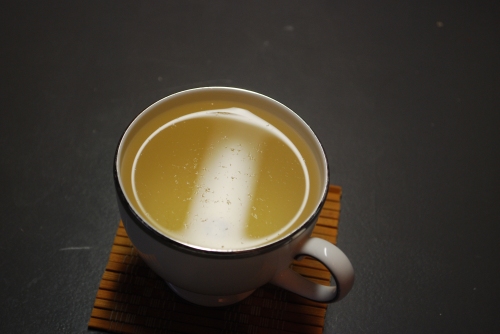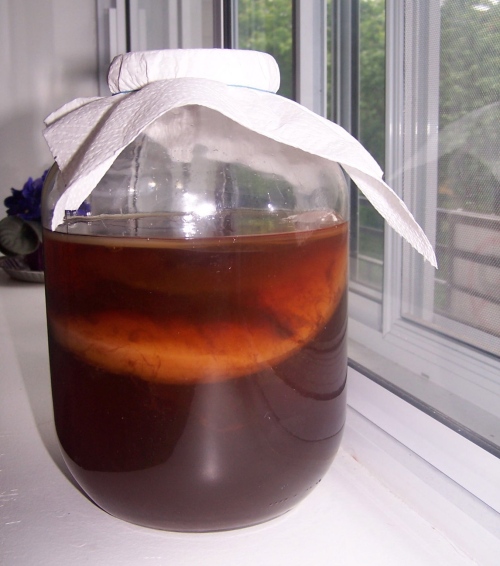Tea is the world’s second most popular drink. Only water is a more popular drink choice. Unless you live in Texas, in which case, (iced) tea is second only to beer in popularity.
Selecting a healthy beverage can be a daunting task. A vast array of drink choices are branded and marketed as healthy, but, upon further review, questions remain about whether they are safe alternatives to water. With tea, there are no such doubts.
Lately, choosing a tea seems to be a complicated and snooty endeavor. There is an emerging class of tea snobs, who shudder at the thought of grabbing that trusty box of Lipton teabags to make their tea. They are focused on different tea producing regions of the world, the different grades of tea available, and the different methods of preparing their favorite brew.
Note: Many paper tea bags are manufactured with epichlorohydrin, which is also used as an insecticide. Upon contact with water, epichlorohydrin produces 3-MCPD, a known cancer causing agent. Maybe those tea snobs are pretty smart after all. If you are considering becoming a serious tea drinker, you will want to invest in a tea ball and experiment with loose leaf teas.
Meanwhile, don’t let any of this put you off. Tea is not so scary, once you get to know a little bit about it.
For our purposes, tea refers to a drink brewed from the Camellia Sinensis species of plant. This distinction helps us avoid confusing the term with various drinks brewed from flowers and herbs, which are often colloquially described as (herbal) teas.
Depending on the age of the leaves when they are picked and their level of oxidation due to the various methods of processing, four distinct types of tea emerge. White tea is derived from buds and young leaves that are minimally oxidized. Green tea comes from more mature leaves that undergo limited oxidation. Black tea is the most oxidized tea. Oolong tea has an oxidation level between green and black tea.
With tea, there is even a fermented foods option. A Symbiotic Colony of Bacteria and Yeast (SCOBY) is added to tea to ferment it and make Kombucha. Kombucha is slightly acidic. Drinkers of Kombucha relate many advantages such as improved immunity, alleviation of acid reflux, increased energy, sharper eyesight, and better skin condition.
Tea leaves contain over 700 chemical compounds. The key bioactive compounds in tea are flavonoids, caffeine, and fluoride.
Health benefits associated with tea include:
—Improving recovery from stress and increasing relaxation;
—Boosting the immune system;
—Preventing cavities;
—Aiding arterial relaxation (vasodilation), which could explain the minor decrease in the incidence of cardiovascular disease found in tea drinkers.
A couple of notes on preparing tea…I do not like sugar in my tea and I can’t see how it would provide any health benefit. Also, because milk binds to key flavonoids, adding it to tea neutralizes the health benefits associated with drinking tea. You can substitute soy milk, as it does not effect the tea flavonoids. Also, adding lemon or other citrus juice improves the body’s ability to absorb flavonoids. So, lemon and not milk. Also, avoid experimenting with lemon and milk…my personal results show that the lemon juice will curdle the milk and ruin your tea (Yep, I am a little slow to anticipate consequences sometimes).
Throughout the day, you have many drink options. Drinking tea is a smart choice. It offers a wide variety of flavors and provides healthful benefits. As the number two drink in the world…Tea tries harder!
Subscribe to SEE by Email or  RSS Feed
RSS Feed
















*Thanks to Mark, the Alaskan Ninja, his interest in the health benefits of green tea led to this post.
-Adam
I really enjoyed this post. I am an avid green tea drinker. I often wondered how it was produced. Your blog enlightened me about that. It also increased my knowledge base regarding green tea’s health benefits. Cheers to you and your informative and beautiful blog!
-Eileen
Adam-
What a great post — sorry it took me a while getting to it. In a general sense, this all supports a general (although not ironclad) thesis on healthy eating — that newer is not better. In other words, food preparation, drink options, and even recipes that pre-date the TV dinner/fast-food era are gaining wider acceptance and recognition as healthier choices. Even within the health-food industry, old-school seems to still prevail. Your prior comments on chocolate milk as a post-workout recovery drink versus the “engineered” drinks makes that point very clearly. And now, the benefits of tea, which eastern asia have been extolling for centuries, is regaining acceptance. Thanks again — I lift a glass of green to your efforts.
Mark
Mark:
*While writing this post, I came across the following ancient wisdom…Better three days without food than a day without tea.
-Adam
For those of you concerned about the ingredients in tea bags…click the link for a DIY alternative.
http://www.craftleftovers.com/blog/archives/32
-Adam
Thank you a bunch for sharing this with all of us you really recognise what you are talking about! Bookmarked. Kindly adtdiionally talk over with my site =). We will have a link change agreement among us